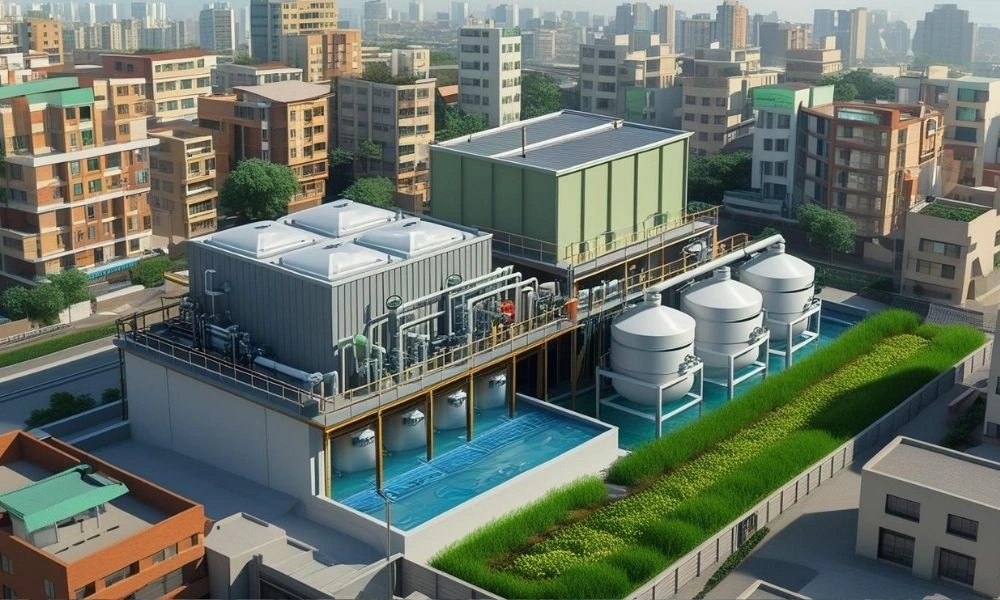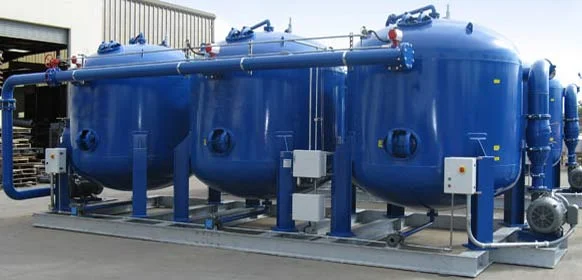WCSP offers premium sewage treatment plants designed for Pakistan’s rapidly urbanizing cities. Their compact, sustainable systems use technologies like MBBR, AOP, and bioremediation to treat wastewater efficiently. These plants help reduce pollution, enable water reuse, and comply with EPA standards. WCSP ensures eco-friendly and reliable solutions for safe, clean, and progressive urban living.
Water Softening Plant
Why Are Sewage Treatment Plants Significant for Urban Pakistan?
What Is a Sewage Treatment Plant (STP)?
A Sewage Treatment Plant is an apparatus that purifies dirty water from buildings, offices, and houses before releasing it into nature or reusing it. It eliminates destructive waste, bacteria, and chemicals from water.
Why Do Urban Centers Like Lahore, Karachi, and Islamabad Require STPs?
Cities in Pakistan are expanding rapidly. More individuals translate to more sewage. Unless treated, this sewage is released into rivers, drains, or fields. This leads to contamination, disease, and water scarcity.
What Problems Does Untreated Sewage Cause?
Health Risks in Cities
Untreated sewage is contaminated with bacteria and viruses. Individuals become ill with diseases such as cholera, typhoid, and hepatitis if they drink or have contact with contaminated water.
Polluted Rivers and Lakes
Most of the rivers of Pakistan are now filthy because untreated sewage is let out directly into them. This kills fish, vegetation, and humans.
How Do Premium STPs Work?
Step 1: Pre-Treatment
Plastic, sand, and cloth are taken out by screens and grit chambers.
Step 2: Primary Treatment
Sewage is left for a while in tanks. Heavy solids settle at the bottom of the tank, and oil or grease floats on the surface. Both are taken out.
Step 3: Secondary Treatment
This is the most critical step. Microorganisms are introduced into the water to consume the waste. WCSP employs MBBR (Moving Bed Biofilm Reactor) technology, which is highly efficient and space-saving.
Step 4: Tertiary Treatment
This last phase purifies the water further. Technologies such as UV light, AOP (Advanced Oxidation Process), and filtration are employed to eliminate any last remaining bacteria or chemicals.
What Makes WCSP’s Sewage Treatment Plants Premium?
Usage of Advanced Technology
- MBBR: Saves space, less energy required, faster working
- Electrocoagulation: Eliminates chemicals and dyes
- Bioremediation: Harnesses natural microbes for safer treatment
Smart Design
WCSP systems are quiet and compact. They easily fit into city spaces like basements, rooftops, and parking spaces.
Low Maintenance
Their systems are automated. You can track them through real-time sensors, so fewer individuals are required to run them.
Where Can These STPs Be Used in Cities?
Residential Housing Societies
Housing societies usually don’t have appropriate sewage systems. WCSP provides small STPs that can be fixed within or outside the society to treat all the waste locally.
Hospitals, Malls, and Schools
Hospitals and schools create a lot of wastewater. WCSP’s modular STPs are ideal for these kind of buildings.
Municipal Corporations
WCSP also supplies large STPs for entire towns or city blocks. These assist city authorities in dealing with increasing sewage loads.
Containerized/Packaged Type Systems
What Does Happen to the Treated Water?
Can the Water Be Reused?
Yes. Water, after treatment, is safe for:
- Gardening
- Washing roads and vehicles
- Cooling systems
- Flushing toilets
- Construction
This decreases the demand on fresh water.
Why WCSP for Urban STPs?
Proven Track Record
WCSP has been successfully implementing projects all over Pakistan since 2007. They deal with industries, government departments, and housing developers.
Certified and Reliable
WCSP is ISO-certified and practices worldwide accepted techniques and equipment.
End-to-End Service
They do it all—from water analysis to system design, installation, training, and maintenance.
How Long Does It Take to Install an STP?
Quick Installation
Small plants in 1–2 months. Medium-sized to large plants in 3–6 months based on site.
Flexible Sizes
They can treat 10,000 to 1,000,000 liters of sewage per day.
Is It Expensive to Install and Maintain an STP?
One-Time Investment, Long-Term Benefits
The cost depends on the size, but savings from water reuse and environmental compliance make it worth it. Plus, it helps avoid fines from the EPA.
Low Running Cost
WCSP designs systems to consume less electricity, need fewer chemicals, and run with minimal staff.
Conclusion
In contemporary cities, sewage treatment is no longer a luxury but a necessity. WCSP offers state-of-the-art, cost-effective, and efficient sewage treatment plants for all types of urban demands. With increasing water contamination and decreasing freshwater resources, the systems lead towards a cleaner, safer, and greener Pakistan.
Frequently Asked Questions (FAQs)
1. Why are sewage treatment plants essential in Pakistan’s cities?
Urban growth increases sewage. STPs prevent disease, protect water bodies, and help reuse water safely, making them vital for sustainable development.
2. What is a sewage treatment plant (STP)?
An STP treats wastewater from homes and buildings, removing solids, bacteria, and chemicals before discharging or reusing clean water.
3. What health risks does untreated sewage pose?
Untreated sewage spreads diseases like hepatitis, cholera, and typhoid by contaminating drinking water sources and the environment.
4. How does the MBBR technology help in treatment?
MBBR uses biofilm carriers for efficient, compact, low-maintenance treatment—ideal for dense cities with limited space.
5. Can treated water from STPs be reused?
Yes. Treated water is reused for gardening, flushing, construction, and cooling, reducing demand on freshwater sources.
6. Where are WCSP’s sewage treatment plants commonly used?
They’re used in housing societies, hospitals, schools, malls, and by municipal authorities for broader community applications.
7. What advanced technologies does WCSP use in STPs?
WCSP uses MBBR, AOP, electrocoagulation, and bioremediation for efficient, eco-friendly, and compact sewage treatment solutions.
8. How long does it take to install an STP?
Small plants take 1–2 months; larger ones may take 3–6 months depending on site and capacity.
9. Is installing and maintaining an STP expensive?
It’s a one-time investment. Long-term savings from water reuse, EPA compliance, and low running costs make it cost-effective.
10. Why choose WCSP for urban STPs?
Since 2007, WCSP offers certified systems, custom designs, full installation, maintenance, and proven success across Pakistan.



